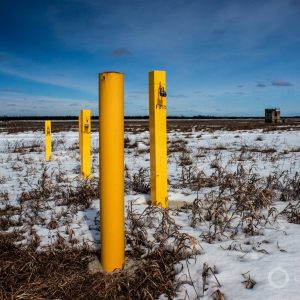The Stream, April 12: Pharmaceutical Drugs Dirty Rivers Worldwide
The Global Rundown
A new study detects high concentrations of pharmaceutical drugs in rivers worldwide. The Metropolitan Water District of Southern California votes to fund a two-tunnel water delivery system. The death toll from a cholera outbreak in Malawi continues to rise as heavy rainfall hits the capital. A newly-developed satellite early warning system monitors shrinking reservoirs across the globe. Argentina buys the largest amount of U.S. soy in 20 years after drought depleted the country’s harvest.
“A large part of the freshwater ecosystems is potentially endangered by the high concentration of pharmaceuticals.” –Francesco Bregoli, a Dutch researcher, in reference to river pollution from over-the-counter and prescription drugs. Bregoli and his team gathered more than 1,400 samples from rivers worldwide, and found a large number pharmaceuticals at dangerous levels for wildlife. Pollution is likely worse in Latin America, Africa, and Asia, but pollutants were also detected in Europe and North America. The Guardian
Latest WaterNews from Circle of Blue
Fear and Fury in Michigan Town Where Air Force Contaminated Water – Some residents can’t drink the water or eat the fish. Now they’re organizing.
What’s Up With Water – April 9, 2018 – “What’s Up With Water” condenses the need-to-know news on the world’s water into a snapshot for the start of the workweek. Listen to this week’s edition to hear coverage on water rights in New Mexico, Australia’s Murray-Darling basin plan, and Libya’s Great Man-Made River.
By The Numbers
30 Latest death toll from a cholera outbreak in Malawi, up from 26 in March. Officials believe that the disease continues to spread due to heavy rainfall in Lilongwe, the country’s capital. The outbreak has been blamed on drinking water from contaminated sources. Reuters
$11 billion Amount of funding that the Metropolitan Water District (MWD) of Southern California will provide to construct a two-tunnel water delivery system in the state. On Tuesday, the MWD voted to revamp the two-tunnel concept, which had been previously off the table. The vote authorizes the MWD to fund two-thirds of the project, but is not irrevocably binding. Los Angeles Times
Science, Studies, And Reports
A new satellite early warning system could help identify areas where taps are likely to run dry, according to the World Resources Institute (WRI). The warning system, spearheaded by WRI, the Dutch government, and other partners, will monitor the world’s 500,000 dams. Although the project is still in development, an early snapshot shows starks declines in reservoirs in India, Iraq, Morocco, and Spain. The Guardian
On The Radar
Argentina, the world’s third-largest soy producer, was forced to purchase its largest amount of U.S. soybeans in 20 years after drought cut domestic crops. The extra soybeans will be crushed into soymeal and soyoil, which Argentina exports worldwide. Reuters
Kayla Ritter is a recent graduate of Michigan State University, where she studied International Relations and Teaching English to Speakers of Other Languages. She is currently based in Manton, Michigan. Kayla enjoys running, writing, and traveling. Contact Kayla Ritter





Leave a Reply
Want to join the discussion?Feel free to contribute!